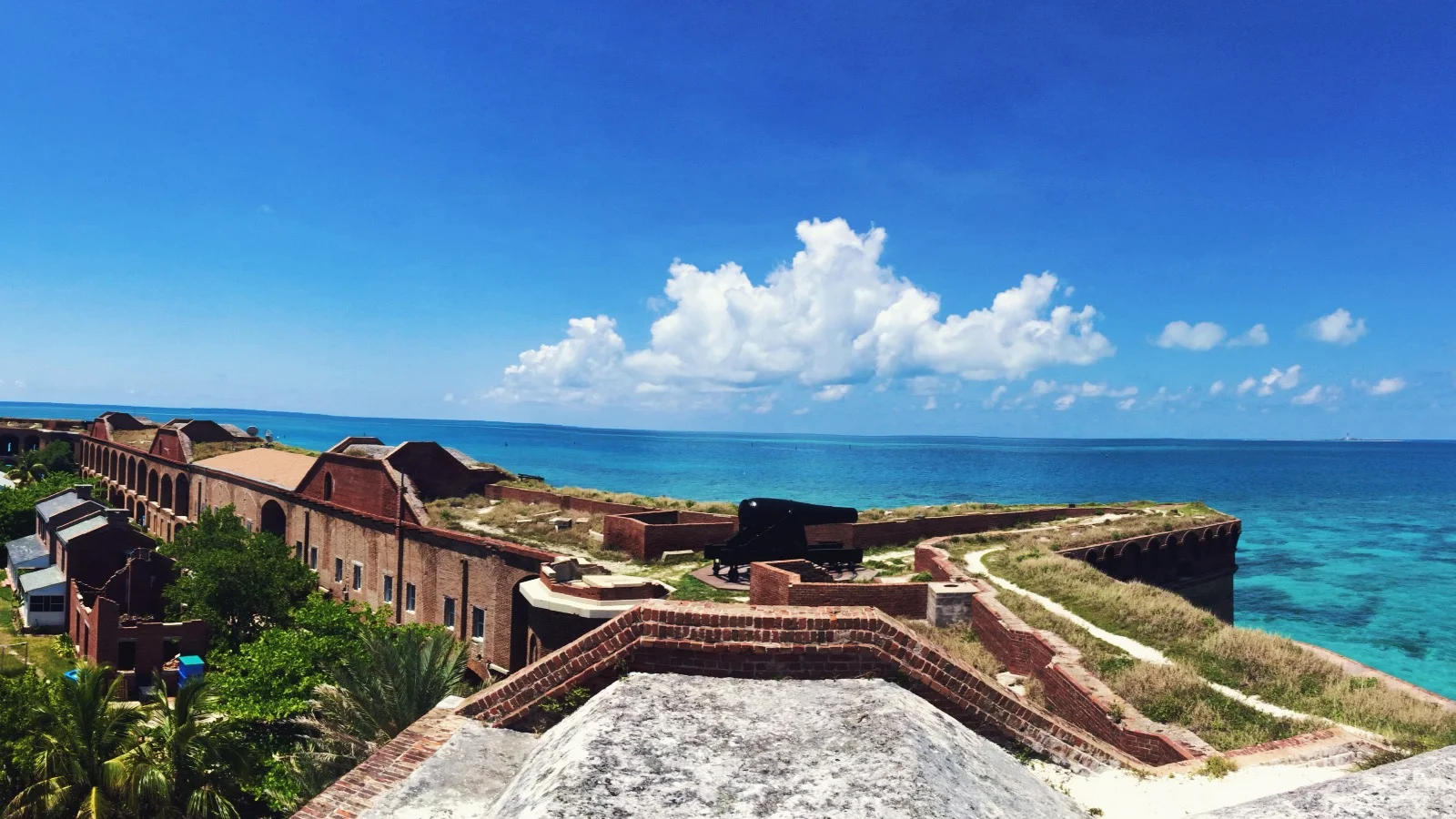














Your Custom Text Here
Park Number: 46/63
First Visited: May 21, 2015
Most national parks showcase wilderness landscapes and monumental scenery that become the main attractions to the majority of visitors and tourists each year, such as Yellowstone’s geothermal activity or Yosemite’s granite domes. There are a couple of parks, however, that were established to protect cultural heritage and historical artifacts, such as Hot Springs in Arkansas or the hanging cliffs in Mesa Verde. What is so unique about this park is that its appeal is an equal balance of both: pristine oceanic ecology and nineteenth-century American antiquity.
Dry Tortugas National Park is a series of seven islands about seventy miles off the coast of Key West, Florida. The largest of the islands, Garden Key, was designated to be a fortification in 1846 by the United States as a means of controlling navigation in and out of the Gulf; construction of Fort Jefferson went on for thirty years, utilizing sixteen million bricks, but was never fully finished. The fort was also used as a prison during the Civil War by the Union for captured deserters.
When you visit the park today you can make day trips out to Garden Key via boat or plane. You can then spend the morning and afternoon exploring the hexagonal fort (now in a state of minor disrepair as nature is slowly reclaiming the isle), walking around the moat, birdwatching, and snorkeling. Camping is also an option but is very limited (reservations need to be made long in advance).
This place is a cultural anomaly that most Americans don’t even know exists. Despite this, it is one of the more fascinating places I’ve been. I can’t wait to return (to camp this time) and would encourage anyone to go who has the opportunity.
Park Number: 46/63
First Visited: May 21, 2015
Most national parks showcase wilderness landscapes and monumental scenery that become the main attractions to the majority of visitors and tourists each year, such as Yellowstone’s geothermal activity or Yosemite’s granite domes. There are a couple of parks, however, that were established to protect cultural heritage and historical artifacts, such as Hot Springs in Arkansas or the hanging cliffs in Mesa Verde. What is so unique about this park is that its appeal is an equal balance of both: pristine oceanic ecology and nineteenth-century American antiquity.
Dry Tortugas National Park is a series of seven islands about seventy miles off the coast of Key West, Florida. The largest of the islands, Garden Key, was designated to be a fortification in 1846 by the United States as a means of controlling navigation in and out of the Gulf; construction of Fort Jefferson went on for thirty years, utilizing sixteen million bricks, but was never fully finished. The fort was also used as a prison during the Civil War by the Union for captured deserters.
When you visit the park today you can make day trips out to Garden Key via boat or plane. You can then spend the morning and afternoon exploring the hexagonal fort (now in a state of minor disrepair as nature is slowly reclaiming the isle), walking around the moat, birdwatching, and snorkeling. Camping is also an option but is very limited (reservations need to be made long in advance).
This place is a cultural anomaly that most Americans don’t even know exists. Despite this, it is one of the more fascinating places I’ve been. I can’t wait to return (to camp this time) and would encourage anyone to go who has the opportunity.